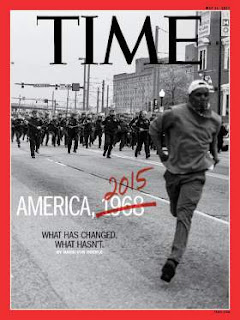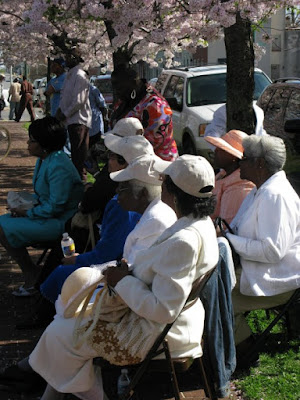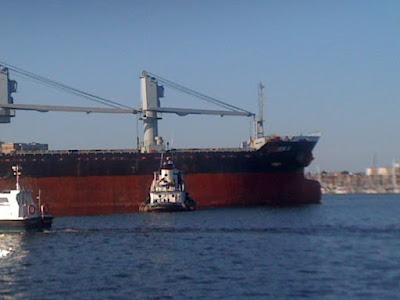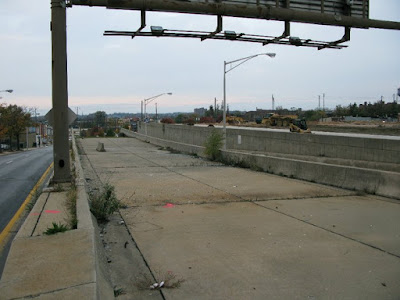Conservatives, Light Transit, Baltimore and the Urban Question
Baltimore, synonym for how conservatives fight cities
 |
| Baltimore unrest 2015 |
After last week, Baltimore also stands as the latest example of the gruesome damage that can be wrought by a conservative governor willing to undermine a more predominantly liberal urban center for political gain.
This is not the first time a conservative state governor has returned federal money slated for trains. Hogan's mentor Chris Christie did the same thing, and so did the governors of Florida and Wisconsin.
The ultimate symbol? On state maps that circulated online to extol the widespread road construction projects the Maryland Department of Transportation proposed, Baltimore City was shown not only to not have any such projects, it had been totally eliminated from the map.
The killing of the Red Line, a train connecting the rich and poor sides of Baltimore with a strategic station in the heart of West Baltimore, should interest the entire country for the same reasons that the city became a matter of national and international interest this past April.
 |
| Light Rail is flourishing in cities across the US. Here Charlotte, N.C |
The abandonment of the light rail project came after twelve years, $280 million of design expenses, and just months before a shovel would have gone into the ground. It came some 20 years after the completion of Baltimore's last major transit investment, the "central light rail line."
But Hogan not only heaped derision on the planned project, he didn't spare its 20 year old predecessor either which he taunted as "the second worst performing light rail line in the country." Whatever flaws that earlier system has stem from doing it on the cheap, the precise medicine Hogan has in mind for whatever transit he may one day support. Insult to injury, quite a change of language and heart for somebody who had just recently declared his love for this city, and seen himself as its savior by sending the National Guard to quell the unrest. Hogan is known to take cues and support from New Jersey Governor Chris Christie, so maybe it should be if no surprise that the affable
| Light rail in a tunnel is not unusual: Seattle station (photo: ArchPlan) |
Federal aid for transit
[the Red Line] .. would have created jobs during construction and better connected people to jobs after that. In fact, Hogan killed the Red Line just two weeks after the Baltimore Metropolitan Council's "opportunity collaborative" pointed out the profound need for public transportation to address the economic disparities that surfaced for the whole world to see after the April riots.
Consider the matter of collaboration, consensus building and rational discourse. These are all apparently despised by leaders that go out, stand in front of a microphone and simply announce. In spite of his early assurances to be a governor for all, Hogan's transportation decision was not the result of collaboration or even deliberation. After months of guessing, the transit agency, the mayor, delegates, senators and the congressional delegation all learned about the decision the same way everybody else did, by tuning into press conference on local TV.
Today federal dollars are scarce and over 30 or so cities are vying for New Starts money that only about half a dozen places are actually able to get. Baltimore was one of those places. The federal portion assigned to the Red Line will not sit around for long, neither the $100 million apportioned for this year nor the remaining $800 million. Procedures for whatever money are grueling, tedious and time consuming.
The Republican governor's announcement that his administration plans to spend nearly two billion dollars on paving "in every single county of the state" flies in the face of austerity. These road projects never have to demonstrate economic or even transportation benefits the same rigorous way transit projects have to prove their worth.
Drop dead!
 |
| Pennsylvania Avenue in West Baltimore at the Easter Parade a couple years back (photo: ArchPlan) |
 |
| Artscape Baltimore, the largest art festival in the country |
But even in a conservative portfolio the announcement of the "roads and bridges" policy sticks out as a quick glance to Houston, Dallas, and Salt Lake City shows, who all build new light rail as have the traditional car-fixated cities of Los Angeles, Denver or Phoenix.
As the Baltimore Neighborhood indicator Alliance had analyzed in 15 years of data tracking: "there is no stronger indicator for disinvested communities than the length of their commute times."
Of course, the tale of the Red Line is not entirely black and white, in whatever direction one wants to take the metaphor, there aren't just heroes and villains. As in any metro area, the story of a major transit project has many twists and turns, even turncoats and fractured allegiances, some typical for places under stress.
 |
| The Port of Baltimore is still a economic engine and is the largest bulk goods port on the east coast (photo ArchPlan) |
The long history history of slighting West Baltimore
The concept for the east west light rail line came from a 2002 blue ribbon panel which in turn had borrowed from a late sixties rail plan under which the original metro line had been constructed. The Great Society era had envisioned hefty urban transit in the vein of San Francisco's BART and DC's Metro as compendium pieces to the preceding Interstate extravaganza which nevertheless proceeded to run roughshod over cities.
 |
| This abandoned freeway terminus was recently demolished with TIGER funds in anticipation of the Red Line and its intermodal West Baltimore Station connecting with commuter rail |
Needless to say that the communities along the highway to nowhere, still reeling from the over 30 year old freeway injustice, did not initially receive the new transit planners with open arms. Further west, other injustices had decimated neighborhoods such as blatant "redlining" and we are not talking transit now.
They even tried a black and white west-east coalition, however, that never got off the ground once more residents got to work on their community station area vision plans and saw more than propaganda. Slowly, a fragile consensus evolved along the corridor on what the preferred alignment for the Red Line should be. In spite of that evolving consensus, many developers and stakeholders continued to hedge against the project not getting funding.
The Greek baker Paterakis even forced a costly last minute shift of one underground station. Against the original project schedule, construction did not slide until rail supporter Martin O'Malley was not governor anymore, giving the newly elected Hogan an unexpected opening. (The possibility that the Feds would fund but not the governor did not occur to anybody until the Democrats lost the last gubernatorial elections in a stunning upset).
Economic Reasoning veils a social agenda
Finally, let's get back to the matter of money, presumably and officially the main reason for canning the expensive project. We noted already that leaving state funds on the table is curious and spending hugely on road projects in every corner of the state doesn't smack of austerity, but maybe the most suspicious economical aspect is the increasing popular scheme of using P3's to pay for projects that government presumably can't afford.
It wasn't a surprise that Hogan would pick of the two major transit projects before him the one that would cost the state less, and that is hands down the Purple Line. Not really because of its slightly lower initial price tag but because the State's project contribution on this project was deferred to later thanks to the "design-bid-build-operate" P3 procurement model. In O'Malley's carefully calibrated funding plan, this was precisely the idea, start both projects concurrently but use initially more state funds for the Red Line, while the initial lift for the Purple Line came from the private equity partners in the project.
 |
| Previous Governor O'Malley at a Red Line event in West Baltimore (photo: ArchPlan) |
In P3 a private consortium offers the entire project and its operations in one package based on performance specifications prepared by the State consultants. The State's expenditures are mostly deferred until operation when it pays essentially a user fee to the consortium.
Just like in a mortgage, the lesser the State's down-payment, the higher the ultimate total cost for the State after the full payback period.
Typically, Republicans love P3 projects because of the high level of private involvement, (the Red Line 50% P3 portion was not enough to attract Hogan's love), but from a public policy and benefits standpoint, P3s are highly questionable, because in the end, they cost the public more.
But the ultimate economic question for transportation and infrastructure planning shouldn't be initial or total cost at all. The question should be what is the return on the investment? Or, the inverse question, can we afford to not invest?
It is just that question which is at the root of the standstill in Washington and even overseas, the ultimate question behind the brinkmanship around the Greek issue and the future of the European Union. Conservatives under the guise of fiscal austerity look at short-term costs and ignore the larger external costs that come from not investing. And as our journey through the issues of the Baltimore Red Line has shown, when conservatives talk about money they also mean a lot of other things.
The arguments about not spending money in Baltimore sound a lot like those against bailing out Greece, from disparaging the political leaders as untrustworthy loose cannons one cannot trust, to the talk about irresponsible behavior to dishing out penalties for assumed laziness. I don't want to stretch the analogies too much, but for all the differences between the Greek and the Baltimore question, it is interesting to see the parallels in the reasoning given for not investing in what is painted as a lost cause.
 |
| Baltimore Museum of Art, 100 year anniversary 2014 (photo: ArchPlan) |
But Baltimore is better than that. It is not a lost cause, it is the vibrant core of this region, as the central city it is the home of the region's culture and education, the seat of its best architecture, origin of a rich history and amazing minds and it is still the place where innovation, research, art and discovery and invention happen and where young minds trend to.
Baltimore like cities around the world will persist beyond adversity, penny-pinching and wrong priorities. It will persist even though the Governor, in spite of his admirable courage in the face of disease threatening his life, has not found in his language and his policies the "open heart" that President Obama spoke about in his eulogy in Charleston.
On this Fourth of July when we may have to concede America's reduced weight as a nation in an increasingly urbanized world, American cities must be the beacons for what makes this country great. And Baltimore can and will not "drop dead".
Klaus Philipsen, FAIA
Related articles on this blog:
